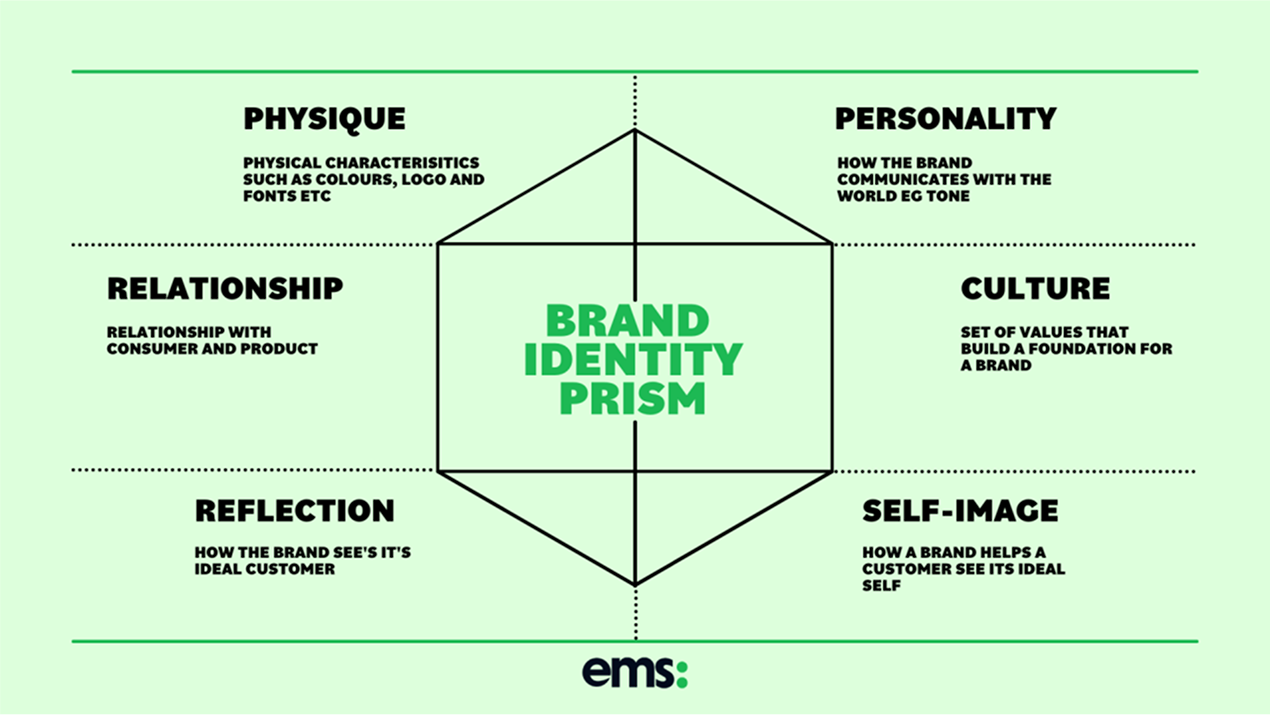Have you ever wondered how some brands instantly connect with their audience and leave a lasting impression? Their social media presence, website or any form of marketing assets have a uniform messaging to connect with their target customer.
In this modernized world, a strong brand identity has become necessary for businesses to stand out in today’s competitive space. Therefore, having a memorable and consistent presence that connects with your audience is more important than simply having a logo or a phrase.
A well-crafted brand identity goes beyond visuals, it encompasses the emotions and perceptions associated with your business in the form of videos, images, text or any other resource, when done right, it helps businesses build recognition, establish trust, and create lasting relationships with customers.
Therefore by following the right strategies, you can ensure that your brand remains relevant and impactful in the competition.
In this blog, we will see all you need to know about creating a powerful brand identity, regardless of whether your company is a startup or an established one looking to rebrand.
What is Brand Identity?
Brand identity is the collection of visual and verbal elements that represent your company. It includes everything from your logo and color scheme to your messaging and brand voice.
Your brand identity should reflect your company’s values, personality, and promise to customers.
A strong brand identity helps businesses:
- Build recognition and trust
- Create emotional connections with customers
- Differentiate from competitors
- Drive customer loyalty and advocacy
Differences Between Brand Image and Brand Identity
Brand identity refers to the visual and strategic elements a company creates, such as logos, colors, typography, and messaging, to shape how it wants to be perceived. On the other hand, brand image is how the audience actually perceives the brand based on their experiences, interactions, and market reputation.
While brand identity is crafted by the company, brand image is formed by consumers. A strong brand identity helps build a positive brand image, but external factors like customer feedback and market trends also play a crucial role. Ensuring consistency between the two is essential for long-term brand success.
What are The Key Elements of a Strong Brand Identity
Building a strong brand identity involves several key elements that work together to create a cohesive and memorable presence. These elements help define how your brand looks, sounds, and connects with its audience, ensuring consistency across all platforms.
To create a solid brand identity, businesses should focus on these core elements discussed below:
1. Logo and Visual Identity

Your logo is the face of your brand. A well-designed logo should be:
- Simple and memorable
- Relevant to your industry
- Versatile (works in different sizes and backgrounds)
Along with the logo, other visual identity elements include:
Imagery and Graphics: Consistent style of photos, illustrations, and icons
Color Palette: Defines the emotions associated with your brand
Typography: The fonts used in branding materials
2. Brand Voice and Messaging
Your brand voice is how your business communicates with customers. It should be:
- Aligned with Brand Values: If you are a luxury brand, your messaging should reflect sophistication.
- Customer-Centric: Speak the language of your audience and address their pain points.
- Consistent: Whether formal, friendly, or humorous, it should remain the same across all channels.
3. Brand Personality

Your brand should feel like a person with its own set of traits. Ask yourself:
- Is my brand professional or playful?
- Should it feel innovative or traditional?
- Do I want a friendly or authoritative tone?
Using brand identity examples like Apple (innovative & minimalist) and Coca-Cola (friendly & emotional) can help shape your brand’s personality.
4. Brand Values and Mission

What does your company stand for? Your values should guide every decision you make and be clearly communicated to your audience. A well-defined mission statement helps customers and employees understand the purpose behind your brand.
5. Brand Identity Prism
The brand identity prism is a model developed by Jean-Noël Kapferer that helps businesses define their brand more holistically. It consists of six key facets:
- Physique: Visual and tangible elements (logo, colors, packaging)
- Personality: Human characteristics associated with your brand
- Culture: The values and principles guiding your brand
- Relationship: How your brand interacts with customers
- Reflection: The way customers see themselves when engaging with your brand
- Self-Image: How customers aspire to be perceived by others
Using the brand identity prism, businesses can create a brand that resonates on a deeper level.
Steps to Build a Strong Brand Identity
Creating a strong brand identity requires a strategic approach that aligns with your business values and target audience. Therefore, by following a step-by-step process, you can ensure consistency and build a brand that resonates with your customers.
Step 1: Research Your Market and Audience
Before defining your brand identity, conduct thorough research:
- Analyze Competitors: What are they doing well? Where do they fall short?
- Understand Your Audience: What are their preferences, pain points, and expectations?
- Identify Market Trends: Stay updated with industry shifts and customer behaviors.
Step 2: Define Your Brand’s Core Identity
Clearly articulate:
- Your brand’s mission and vision
- Your brand’s personality and values
- The emotions you want to evoke in your customers
Step 3: Create a Unique Visual Identity
Develop a visual identity that aligns with your brand’s personality and market positioning. This includes:
- Logo and brand colors
- Typography and design style
- Website and marketing material consistency
Step4: Develop a Strong Brand Voice
Craft a messaging strategy that communicates your brand’s values effectively across:
- Social media
- Website and blog
- Customer service interactions
Step 5: Implement and Maintain Brand Consistency
Once your brand identity is established, ensure consistency across all touchpoints:
- Marketing materials
- Website design and user experience
- Customer interactions and advertisements
Common Brand Identity Mistakes to Avoid
Many businesses make mistakes when developing their brand identity. Here are some pitfalls to watch out for:
| Mistake | Why It’s a Problem | Solution |
| Inconsistent Branding | Creates confusion among customers | Use brand guidelines |
| Ignoring Audience Preferences | Leads to a disconnect with customers | Conduct regular audience research |
| Overcomplicating Design | Makes branding forgettable | Keep it simple and clear |
| Lack of Brand Story | Reduces emotional connection | Develop a compelling narrative |
How Doodlo Design Studio Can Help with Brand Identity
Creating a strong brand identity requires expertise, creativity, and strategy. At Doodlo Design Studio, we specialize in crafting distinctive brand identities that help businesses establish a memorable presence.
Why Choose Doodlo Design Studio?
- Custom Branding Solutions: We tailor our branding approach to fit your business needs.
- Expert Designers & Strategists: Our team ensures your brand identity is visually appealing and strategically aligned.
- End-to-End Brand Development: From logos and color palettes to messaging and brand guidelines, we handle it all.
Our Services Include:
- Brand strategy consultation
- Logo and visual identity design
- Brand messaging and voice development
- Comprehensive brand guidelines
With our expertise, we help businesses create a lasting impression in their industry.
A well-defined brand identity is crucial for any business looking to build recognition and trust. By understanding key elements, using tools like the brand identity prism, and avoiding common mistakes, you can create a compelling brand that stands out.
If you’re ready to elevate your brand, let Doodlo Design Studio help you craft an identity that truly represents your business. Get in touch today to get started!

